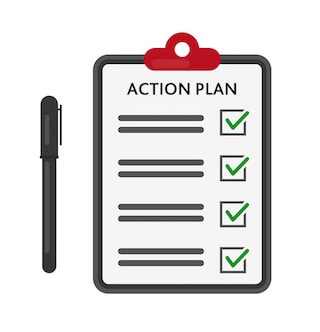When people think about changing their subconscious premises, they often envision therapy. Therapy is an important tool for understanding and addressing deeply-held conflicts. A therapist can help you identify such conflicts and give you emotional and practical support in addressing them.
But, in my view, therapy is not the place to start. The place to start is owning and managing how you program your subconscious value-hierarchy on a daily basis. Four conscious phenomena program your subconscious value-hierarchy:
1) The actions you choose (toward or away from a given object).
2) The goals you set (or reject).
3) The outcomes you experience (pleasant or unpleasant).
4) The means-ends relationships you identify (as leading toward values/away from disvalues or toward disvalues/away from values).
The time to take control of how you’re programming your value-hierarchy is when you notice you are in conflict over an important initiative. It could be you’re in conflict over following through on a diet or exercise program, or any other initiative or important change you are trying to make.
When your values are misaligned, you are doomed to experience conflict, which will slow you down or stop you from achieving your top goals. At some point, you decide it’s worth changing the subconscious premises to bring them in alignment with your rational values. That’s when you need to make an action plan to shift your subconscious programming. It consists of four steps.
Here is a brief overview of the process.
Step 1: Make a commitment to the change
To make a commitment, you need to go through a logical sequence to become committed. Here is how Les Brown puts it:
- It’s possible.
- It’s necessary.
- It’s me who must do it.
- It’s hard.
- It’s worth it.
- It’s a done deal.
Step 2: Identify tactics and practices that can help
Tactics are procedures you can use at the moment you notice there’s a potential problem. Often you can get them from experts. They are reactive, first-aid procedures to help you make better decisions in the moment; you memorize them or put them on a cheat sheet. “Thinking on paper” is a tactic for dealing with trouble thinking. Counting to 10 is a tactic for dealing with feeling angry. Tactics are specific to the kind of change you want to make.
Practices are proactive. They are actions you add to your calendar on a regular basis, to help you reprogram a certain kind of value issue. For example, identifying “Three Good Things” every day is a practice that helps you reframe your day in terms of positives. Weighing yourself every day helps you monitor your weight. Journaling every day for 15 minutes is a practice that helps you get more in touch with your feelings. A weekly review is a practice that helps you stay in better touch with your longer-term goals. Any benchmark or ritual is a practice. Again, they are specific to the kind of change you want to make.
Step 3: Figure out how to implement the tactics and practices
Tactics are implemented by means of reminder cards and standing orders. You need to identify when you will need the tactic and figure out how to have a reminder present at that moment.
Practices are scheduled, so you need to figure out when they can best fit into your day or week. You may need to experiment with different times or set up some kind of reminder system to help you. (If you have a lot of problems with this, you may need a scheduling infrastructure — that may be your initiative.)
Step 4: Follow through
Following through at planned times is what reprograms the subconscious value-hierarchy. If you don’t follow through, you need to figure out why, and what additional support you need. This is part of what makes the change emotionally difficult. You need to face failure head-on, so you can figure out how to avoid it the next time. This is what I teach in my Do What Matters Most course.
You only need this kind of action plan when you are trying to align your subconsciously-programmed values with your consciously-held values. When your values are already aligned, you can simply identify the logical steps to achieve your goal and follow them. When they aren’t aligned, however, you can use these steps to develop additional tactics and practices that support realignment.









I found this really useful. Both the introspection of alignment as well as the tactics.
Thanks, Maripaz!